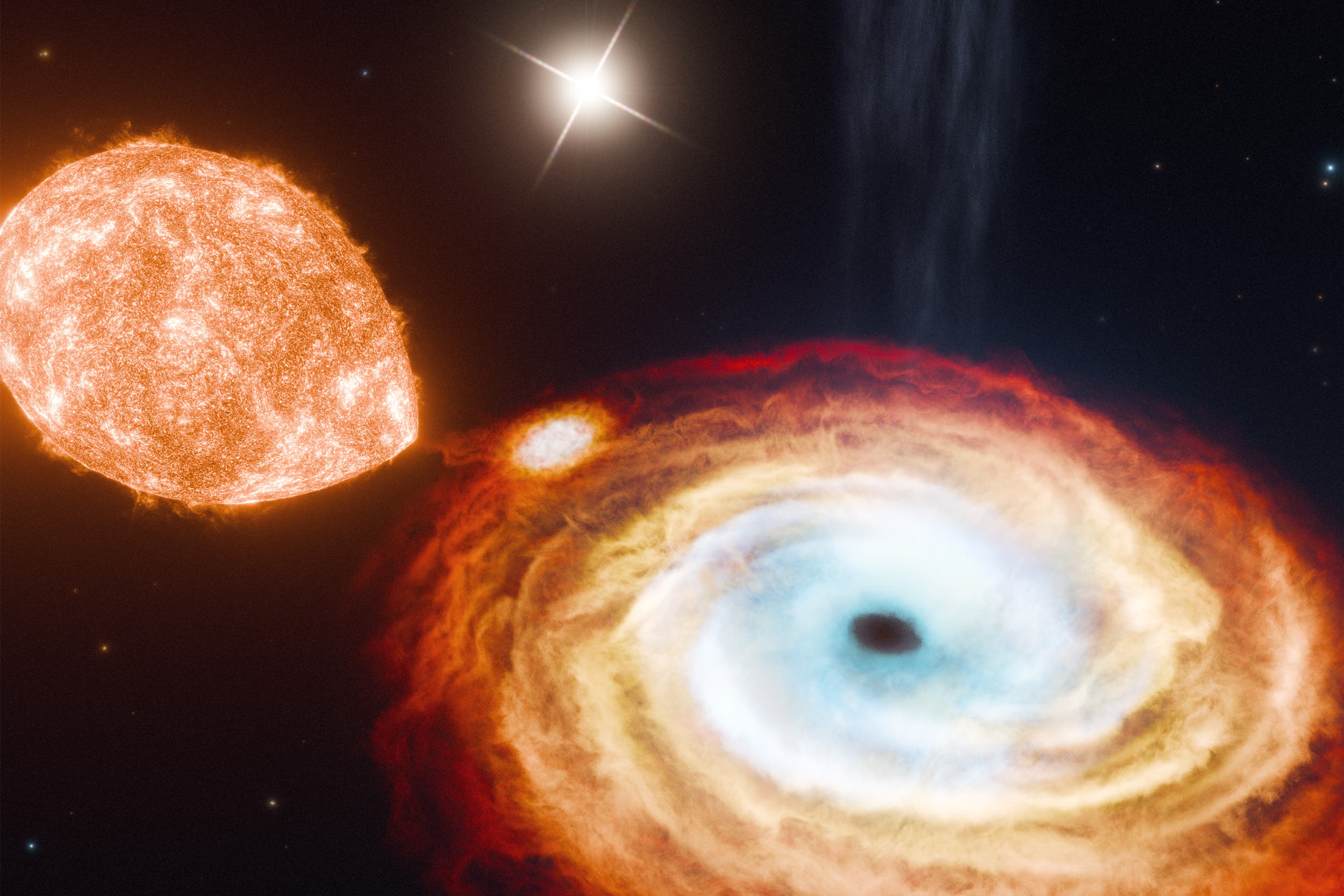Scientists find first ever ‘black hole trio’
New find challenges our understanding of where such objects come from

Scientists have found the first ever “black hole triple”.
Many of the black holes previously found are thought to be part of a pair. Those pairs form when a black holes becomes entwined with another object – such as another black hole, a star or similar object – and they are pulled together by the powerful gravity of the black hole.
Now, however, researchers have seen the first ever “black hole triple”. That is a black hole that is eating a small, nearby star – but it is also being circled by another star, at a distance.
The further star is so distant that it takes 70,000 years for it to orbit around the black hole. Scientists are not sure how a black hole could have a hold on an object at such a distance, and where it might have come from.
The team now believes that contrary to being born following a violent explosion of a dying star (a supernova), V404 Cygni was formed through a more gentle process some four billion years ago.
Kevin Burdge, a Pappalardo Fellow in the Massachusetts Institute of Technology’s Department of Physics, in the US, said: “We think most black holes form from violent explosions of stars, but this discovery helps call that into question.
“This system is super exciting for black hole evolution, and it also raises questions of whether there are more triples out there.”
Astronomers said the V404 Cygni system holds a central black hole in the act of consuming a small star.
This star appears to be very close to the black hole, orbiting it every 6.5 days, resembling most binary systems.
But they also discovered a second star that appears also to be circling the black hole, though at a much greater distance, orbiting once every 70,000 years.
Typically, black holes that are formed as a result of a supernova would push away any astronomical objects nearby.
But the fact that a faraway second star is orbiting V404 Cygni suggests it was formed through a gentler process, the result of a star simply caving in on itself instead of producing an explosion.
Such a gentle origin would hardly disturb any loosely bound, faraway objects, astronomers say.
Mr Burdge said: “Imagine you’re pulling a kite, and instead of a strong string, you’re pulling with a spider web.
“If you tugged too hard, the web would break and you’d lose the kite.
“Gravity is like this barely bound string that’s really weak, and if you do anything dramatic to the inner binary, you’re going to lose the outer star.”
V404 Cygni was discovered in 1992 and is one of the very first objects to be confirmed as a black hole.
It is well studied, with more than 1,300 scientific papers published.
But when Mr Burdge and his colleagues were looking for new black holes, they came across an image of V404 Cygni that looked like a blob of light with a second blob close to it.
Until now, scientists did not closely investigate this second blob, which they now say is the distant second star.
Mr Burdge said: “It’s almost certainly not a coincidence or accident.
“We’re seeing two stars that are following each other because they’re attached by this weak string of gravity.
“So this has to be a triple system.”
The team ran various simulations to see how this black hole triple system would have formed and in the process, were able to calculate its age.
Mr Burdge said: “We’ve never been able to do this before for an old black hole.
“Now we know V404 Cygni is part of a triple, it could have formed from direct collapse, and it formed about four billion years ago, thanks to this discovery.”
Additional reporting by agencies
Join our commenting forum
Join thought-provoking conversations, follow other Independent readers and see their replies
Comments
Bookmark popover
Removed from bookmarks